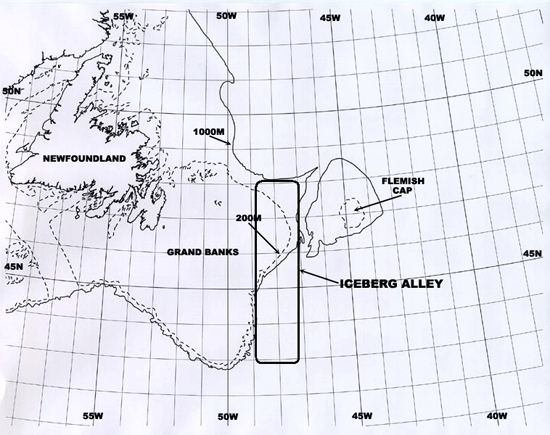

After slipping into the ocean, the bergs float in frosty arcticbays melting slowly, if at all, until passing through the Davis Strait and into the Labrador Current which carries them south into Iceberg Alley. The glaciers of western Greenland flow at speeds of up to seven kilometres a year, among the fastest moving in the world.

Glaciers then "flow"or "creep" towards the ocean under their own weight, and eventually slip in. Each layer of snow compresses those below until, 60 to 70 metres down, glacial ice forms. Glaciers form on land by snow building up overthousands of years. Icebergs are edges of glaciers that have broken off and slipped into the ocean. The rest come from glacierson islands in Canada’s Arctic area. As she puts it, "We were one funeral away from never being able to build another punt.Iceberg off the coast Where do icebergs come from?ĩ0% of icebergs seen off Newfoundland and Labrador come from the glaciers of western Greenland. By the time she returned home, this world had all but vanished and the expertise of generations was headed for oblivion, too. For two centuries, Fogo Island had been a cod-based world where men fished with boats and nets, delivered their dried-and-salted catch to the merchant at the end of the season and were paid largely in goods. By 2001, when she cashed out, JDS' stock had octupled.Īfter sailing around the world, Cobb decided that what she wanted to do was go home. Beginning in 1999, Cobb was part of a team that acquired 40 companies. But she ended up light-years away: senior vice president of strategy for high-flying JDS-Uniphase, a fiber-optic-device company. When Cobb left Fogo for high school in 1976, she had never even been to the village of Deep Bay, 8 miles down the road from her home. She calls her approach "entrepreneurial philanthropy" and "progressive capitalism." And she doesn't even own the hotel: It's the property of a community-owned foundation, Shorefast, that Cobb set up, although she is on the board and the driving force behind the hotel project. She has also backed up her ideals with $43 million of her own money. The traditionally patterned quilts on the beds, for example, are made by island women in a workshop up the road. In Cobb's vision, the 29-room Fogo Island Inn, where suites begin at $650 a night for the spring season, is a farsighted attempt to employ luxury travel to keep Fogo Island alive. You revel in the raw elements here and fall into synch with the tides, which is the way time is kept here. But throughout the year, Fogo Island is undeniably romantic. In summer, there is offshore birding and whale-watching, fishing, biking and visits to fishermen and craftspeople. From March to June, the inn offers a front-row seat to massive floes heading down Iceberg Alley from Greenland to the North Atlantic (the very same route taken by the big fella that sank the Titanic). John's and drive two hours to a ferry-is a profound tonic in itself. The island's remoteness-you fly to Gander via St. It is the dream of visionary 50-year-old former tech executive Zita Cobb, who was born on the tiny island-in the town of Joe Batt's Arm ("arm" being local parlance for peninsula)-then decamped to make a fortune in the 1990s and returned to save the place she loved from vanishing. Fogo Island Inn, a luxurious hotel with eye-catching design, is set in an austere landscape hundreds of millions of years old off the northeastern coast of Newfoundland.


 0 kommentar(er)
0 kommentar(er)
